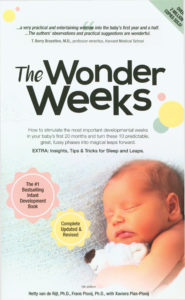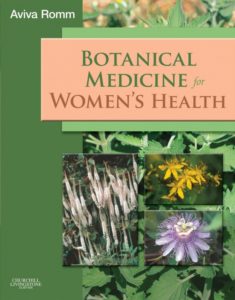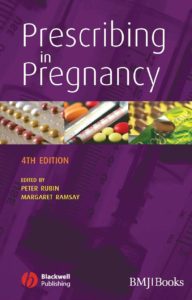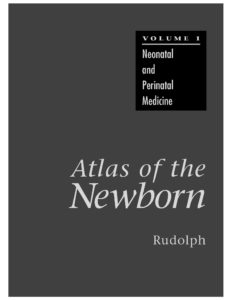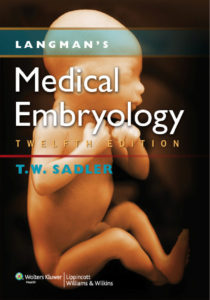Reed N. Rare and Uncommon Gynecological Cancers
This book is intended as a reference manual that will provide the busy clinician with up-to-date information on the diagnosis and treatment of uncommon and rare gynecological cancers. While standard textbooks briefly cover these tumors, this is intended as a more comprehensive yet easy-to-use guide. After opening chapters on epidemiology, pathology, and diagnostic imaging, the full range of infrequently encountered gynecological cancers (ovarian, uterine, cervical, vaginal, and vulval) is presented and discussed with the aid of high-quality illustrations. In each case, detailed attention is paid to both differential diagnosis and current treatment options. The closing chapter is devoted to translational research. The book has been written by an international panel of experts and is the first to gather all the uncommon and rare gynecological cancers together within one volume.
Reichert R. A. Diagnostic gynecologic and obstetric pathology
In covering the topic of gynecologic and obstetric pathology, this book attempts to carve out its own niche midway between an atlas and a traditional textbook. The gross and microscopic images in this atlas are presented exclusively in color, and are supplemented by pertinent clinical information and discussions of differential diagnostic considerations. When deemed appropriate, images of immunohistochemical and special stains are included. To further enhance their visual appeal and the overall learning experience, many images in this book are presented with annotations and/or in composite form, and selected images have been enlarged. This image-intensive textbook also includes numerous Pap smear images and cytologic-histologic correlations. In addition to coverage of pathology of the organs of the female genital tract, brief overviews of the normal histology of these sites are provided as necessary background information. Separate chapters are also devoted to placental and peritoneal pathology. There is an emphasis on diagnostic-related issues pertaining to common lesions and their variants, although classic forms of rare lesions are also presented. In selected instances, recommendations on the processing of gross pathology specimens, discussions regarding the optimal approach for intraoperative consultations, and recommendations on the phrasing of key portions of pathology reports are provided. The 10 chapters of this book are organized by site, and the beginning of each chapter lists the entities discussed and their corresponding page numbers.
Remington Jack Infectious Diseases of the Fetus and Newborn
Infectious Diseases of the Fetus and Newborn Infant, written and edited by Drs. Remington, Klein, Wilson, Nizet, and Maldonado, remains the definitive source of information in this field. The 7th edition of this authoritative reference provides the most up-to-date and complete guidance on infections found in utero, during delivery, and in the neonatal period in both premature and term infants. Special attention is given to the prevention and treatment of these diseases found in developing countries as well as the latest findings about new antimicrobial agents, gram-negative infections and their management, and recommendations for immunization of the fetus/mother. Nationally and internationally recognized in immunology and infectious diseases, new associate editors Nizet and Maldonado bring new insight and fresh perspective to the book.
Rijt H. The wonder weeks
How to stimulate your baby’s mental development and help him turn his 10 predictable, great, fussy phases into magical leaps forward describes the incredible mental developmental changes (leaps) and regression periods that all babies go through. Understanding the real reason behind crying, eating and sleeping problems is the only real solution every parent needs.
Romm A. Botanical Medicine for Women’s Health
A comprehensive resource of medical and herbal interventions related to women’s health issues, Botanical Medicine for Women’s Health provides a unique combination of traditional and modern scientific data on herbal medicine. Written by Aviva Romm, MD, an experienced herbalist, physician, and midwife, this guide blends a clinician-sensitive and patient-centered approach to women’s health issues. Coverage of menstrual health, fertility, breast conditions, and more makes this an essential resource for everyday practice.
Rosevear S. K. Handbook of Gynecology Management
This is an easily accessible guide offering advice on all gynaecological conditions and treatment. It serves as a companion text to Handbook of Obstetric Management, also edited by Sylvia Rosevear.
This comprehensive text provides information on conditions and treatment modalities. It reflects the current evidence base as well as expert knowledge, and includes contributions from a number of specialists within the field.
Rubin P. Prescribing in Pregnancy
The use of drugs in women who are pregnant or breast feeding is a question of fine balance. Harm may befall a baby because a drug has been used, but mother and baby could suffer if a disease goes untreated. Information about the safe and effective use of drugs in pregnancy has not kept pace with the advances in other areas of therapeutics. Systematic research involving drugs in pregnancy is fraught with ethical, legal, emotional and practical difficulties and in many cases our knowledge is based on anecdote or small studies. The purpose of this book is to bring together what is known about prescribing in pregnancy and to put that information in a clinical context. The first three editions were well received and this has encouraged us to produce a fourth edition. All chapters have been extensively revised or rewritten, with several new authors bringing their clinical experience of this challenging subject.
Rudolph Arnold J. Atlas of the newborn
This is a comprehensive reference for those involved in neonatal medicine. It is the first title of a five-volume work covering diseases, disorders and conditions affecting the newborn. Numerous colour illustrations provide the reader with a comprehensive collection of newborn diseases.
Sadler T. W. Langman’s Medical Embryology
Langman’s Medical Embryology covers embryology for medical, nursing, and health professions students with a strong clinical emphasis. The text is highly valued as a teaching and learning resource for its clinical correlation boxes, summaries, problems to solve, illustrations and clinical images, and clear, concise writing style—all of which make the subject matter accessible to students and relevant to instructors. Online material includes Simbryo—an animation program showing processes, organs, and systems developing in human embryos—as well as review questions and full text online. A separate Faculty Image Bank and PowerPoint presentations are also available.
Saito S. Preeclampsia
This volume is an excellent guide that comprehensively illustrates hypertensive disorders of pregnancy, especially preeclampsia, in both the basic and clinical aspects. Preeclampsia is a pregnancy-specific multi-organ disorder and a leading cause of maternal and neonatal mortality. The pathophysiology of pregnancy-specific disorders was long unknown, but recently many new findings have been reported from the point of view of pathophysiology. Furthermore, this complication of pregnancy, especially preeclampsia, is a potent risk factor for chronic conditions such as cardiovascular disease, diabetes mellitus, kidney disease, and hypertension. The book is composed of seven parts including genetic background, pathology, pathophysiology, and the latest prediction and treatment of preeclampsia. Specific basic topics such as immunological maladaptation, placental adenosine signaling, and new prediction markers are also expounded by experts. Thus it benefits not only obstetricians, pediatricians, nephrologists, diabetologists, and cardiologists, but also immunologists, endocrinologists, geneticists, pathologists, biologists, and molecular biologists who are interested in the treatment of hypertension in pregnancy.




